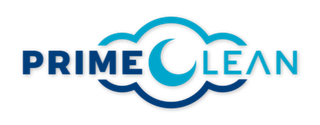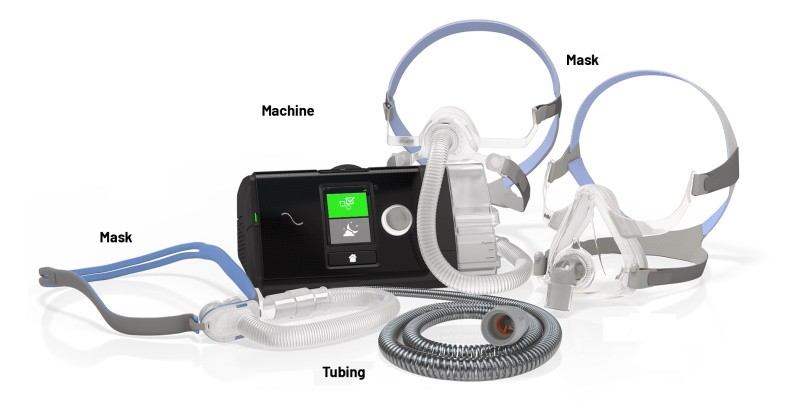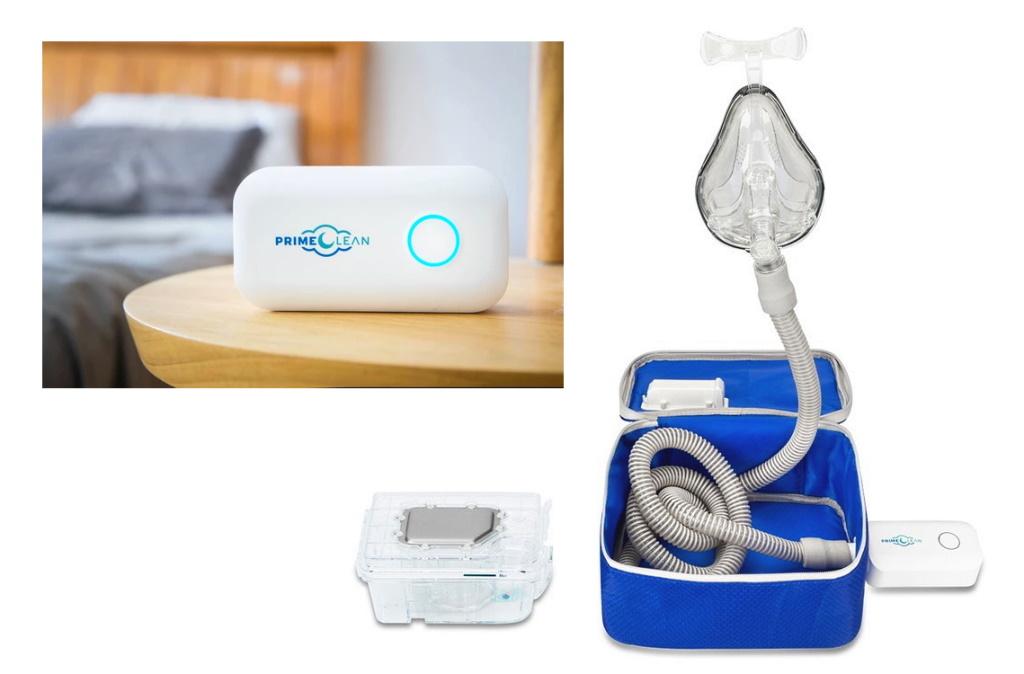CPAP Parts And Cleaning Supplies
Nov 25, 2021 by PrimeClean
Using CPAP Machine is the solution for all sleep apnea patients (and their bed partners). However, CPAP machine, although is pretty simple to handle and use, does require some additional investment, material and personal, in maintenance – daily/weekly, monthly, yearly, or in additional comfort…and the CPAP industry is onto this with CPAP Cleaning Supplies, spare parts, accessories...
CPAP Machine 101
Continuous Positive Airway Pressure therapy was developed by Dr. Colin Sullivan in 1980. and since then it has proven to be overall the best solution for sleep apnea. For that purpose, Dr. Sullivan developed the same-named machine. As the name suggests, the machine uses continuous airflow pressure (prescribed by a doctor) to keep the upper airways constantly opened i.e. unobstructed. CPAP machine is used for the most common type of sleep apnea - obstructive sleep apnea (OSA). CPAP device is the most common PAP machine used in sleep apnea therapy; it is simple, highly efficient, budget-friendly (more insurance providers cover CPAP devices than other PAP solutions).
Today’s top CPAP manufacturers (ResMed, Phillips Respironics, Somnetics, Fisher & Paykel, DeVilbiss…) developed the CPAP industry almost to perfection. With high-end devices and full additional supplies and accessories support, sleep apnea therapy is currently fast improving, and the ultimate beneficiaries of this trend are the patients.
How does it all work?
The main principle and parts are pretty much the same as in the first machine produced by Dr. Sullivan. The main part of the modern CPAP machine is the motor/air compressor. The CPAP machine’s compressor (motor) generates a continuous stream of pressurized air (room air, not oxygen!) that travels through an air filter into a flexible tube. This flexible tube is connected to the CPAP face mask via CPAP hose connector and delivers filtered/purified air under (prescribed) pressure into the mask that’s sealed around the patient’s nose and mouth (or just one of those two, depending on a mask type). Since the CPAP machine technology and process are simple, with little room for improvement, the main change nowadays is that CPAP machines are manufactured with smaller, quieter motors, and higher quality filters and parts in general.
CPAP Machine Parts And Accessories
As mentioned before in one of our articles, every PAP machine contains 3 main parts: a motor/compressor (the machine itself), a hose, and a mask. Other parts are air filter(s), humidifier (in some models), mask straps, CPAP Tubing Connectors, hose connectors (some of the other parts might not be listed with all machines, but mostly it is the ones we mentioned).
All CPAP device parts are considered expendable and need to be maintained and replaced on time!
CPAP Motor/Compressor
As we mainly explained above, the motor is the “heart” of the CPAP machine. It is used as an air compressor that sucks air, pushes it through the air filter, and via hose and mask, to the patient’s mouth and/or nose. Air is pushed at the prescribed air pressure (by a medical doctor). There is no maintenance that you can do for this part of the CPAP machine…if the motor is not functioning properly, the only thing you should do is contact the manufacturer for further support.
Air Filter(s)
As CPAP machine uses room air. To remove potentially harmful micro contaminants, the air is filtered through an air filter (or in some cases filters). The air filter can be disposable or non-disposable. It is usually made of paper or paper-like material, foam, or woven synthetic material, which have the capability of stopping micro or larger contaminants (dust, pet hair, dander, pollen…). Some of the machines use the combination of two filters for more precise and detailed filtering. The air filter should be replaced and/or washed regularly, as suggested by the manufacturer!
CPAP Hose, CPAP Hose Connector (CPAP Tubing Adapter) :
CPAP hoses connect the CPAP machine and the face mask. Although their length and diameter may vary, mostly they have some industry standards. Hoses come in various lengths of 4, 6, 8, or 10 feet, with 6 feet being the most common; they are available in 19mm or 15 mm diameter, where the 19 mm is considered a standard and fits most CPAP machines (15mm is known as slim or thin type). Besides this, they can also be non-heated (standard version) and heated (with heating wires in the hose itself). If the CPAP machine has a humidifier unit, there are special 18-24 inches long hose that connects them.
All hoses have connectors on the end. It is the part of the CPAP device which has the function of connecting the hose (tube) with the CPAP face mask. They can be made from rubber or hard connection which is known as stability end. At the end, where the mask will be connected, all of them have a diameter of 22 mm. Standard CPAP Hose Connector (or CPAP Tubing Adapter) is 15mm to 22mm; and this will fit 99% of the standard and special masks and hoses (e.g. Heated Tube, Air mini Tube).
CPAP hose and connectors are considered expendable parts that need to be replaced occasionally, usually every 3-6 months or as suggested by the manufacturer.
CPAP Mask :
When talking about comfort, and efficiency, one of the key questions is which CPAP face mask suits you the best? Although mainly standardized, there are differences in face mask designs and before manufacturers’ design preferences, there are 3 main types of CPAP masks.
Full face mask. Self-explanatory, full face mask covers full or most of the face. It covers both mouth and nose at the same time. This is the most common CPAP mask as it fits all types of “breathers”.
Nasal mask. Unlike the full face mask, this mask is significantly smaller and covers only the nose. Choice number one for “nose breathers”, this mask allows them much more mobility during sleep. Since it is more comfortable, recently it is gaining popularity with all types of breathers as it is used in combination with the chin strap which keeps the mouth closed during sleep.
Nasal pillow mask. The smallest of the 3 types, the nasal pillow mask is an upgraded solution to the nasal mask. This mask does not cover any part of the face, but instead, it sits right under the nose and uses silicone pads that fit just inside the nostrils.
There are a few more optional parts, such as humidifier, muffler, and similar, but the ones we mentioned are pretty much the standard parts and the ones needed to be presented.
CPAP Cleaning Supplies
All CPAP devices must be cleaned and sanitized on regular basis. Usually, it is daily or at least 2-3 times per week. There are various ways of keeping your CPAP equipment clean and sanitized, from manual cleaning and washing to using sprays, wet wipes, and chemicals, to (most likely) the most advanced solution of using a smart automatic CPAP Cleaner. We listed a few of the CPAP Cleaning Supplies solutions…
CPAP Cleaner:
CPAP cleaner is most likely the best solution for keeping your CPAP equipment clean and sanitized on daily basis. Its simple plug-and-play process is the fastest and yet still most effective cleaning solution. They don’t use chemicals and leave no trace of use on the CPAP equipment itself.
In general, we differ 2 types of CPAP cleaners: Ozone Cleaner and UV Cleaner. As mentioned in more detail in one of our articles before, although both Ozone and UV have sanitizing effect, and are simple to use, ozone sanitizers seem to have better results (UV sanitizers can be less effective if UV lamps used are not strong enough, and since they are simple to produce, with cheap UV lamps, they often prove to be not enough effective).
Our recommendation is to use PrimeClean® PLUS CPAP Cleaner as we can guarantee its 99.9% efficiency. And now with the Ozone Filter Upgraded Sanitizing Bag, there is no more ozone smell, while keeping the same disinfecting efficiency.
Spray Cleaner :
Cheap and accessible cleaning solution would be sanitizing spray. Packed in a can, it is easy to carry and simple to use. These cleaners usually offer some refreshing scent that, if liked, brings a more enjoyable CPAP experience. They can be used for cleaning entire CPAP equipment, but it’s mostly effective for a face mask and easily reachable components (not really effective for the hose). Also, it requires the use of a clean cloth to wipe the excess chemical. Usually used daily due to its limited sanitizing properties.
In general spray cleaners are the “in hurry” solution and not recommendable as the main cleaning solution.
Wet Wipes :
Recently popular, “quick solution” champion, wet wipes are indeed a fast and somewhat effective cleaning solution. Although their efficiency is limited (cannot clean all components), their simple use, no additional wiping, and small size, often makes them a popular solution as a daily solution or for urgent cleaning. Wet wipes are a perfect solution to be used besides some more efficient cleaning solution (for example, with automatic cleaner).
Liquid Soak Chemicals:
As the name suggests, these are the liquid chemicals that are used as a soaking liquid. CPAP equipment is put in a container or a dish and liquid chemicals are put in (up to the level that covers every part of the equipment). Although they are efficient in sanitizing, use is not so simple as it requires time before and after the cleaning process. For not so detailed sanitizing, they can be used with the cloth, like a wet wipe.
Keep in mind sing any liquid chemicals for cleaning and sanitizing CPAP equipment, even though might be efficient, might damage the equipment (or void the warranty!) and it requires more effort and time than automatic cleaner.
Additional cleaning supplies to be used with washing or other liquid chemicals are CPAP tube brush, dryer, anti-bacterial soap, and so on.
Maintaining CPAP Device
Like every other machine, the CPAP device and its equipment and accessories must be regularly maintained and replaced. Using a CPAP device that is not functioning properly or is not sanitized regularly could, and most likely will, bring more harm than good.
CPAP device parts (hose, connectors, air filters, mask…) must be sanitized regularly and replaced as manufacturer instructed. Cleaning as often as possible makes your health safer and your CPAP Device last longer. Be smart and stay healthy!






